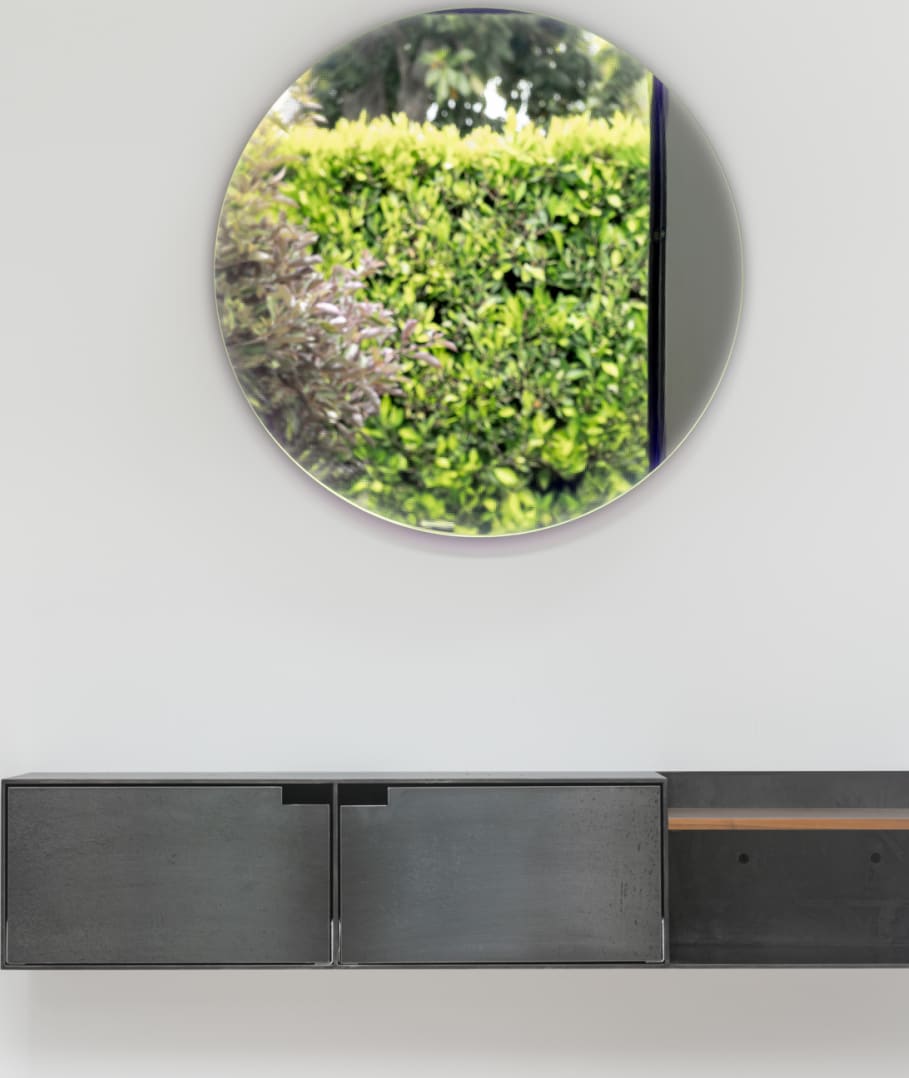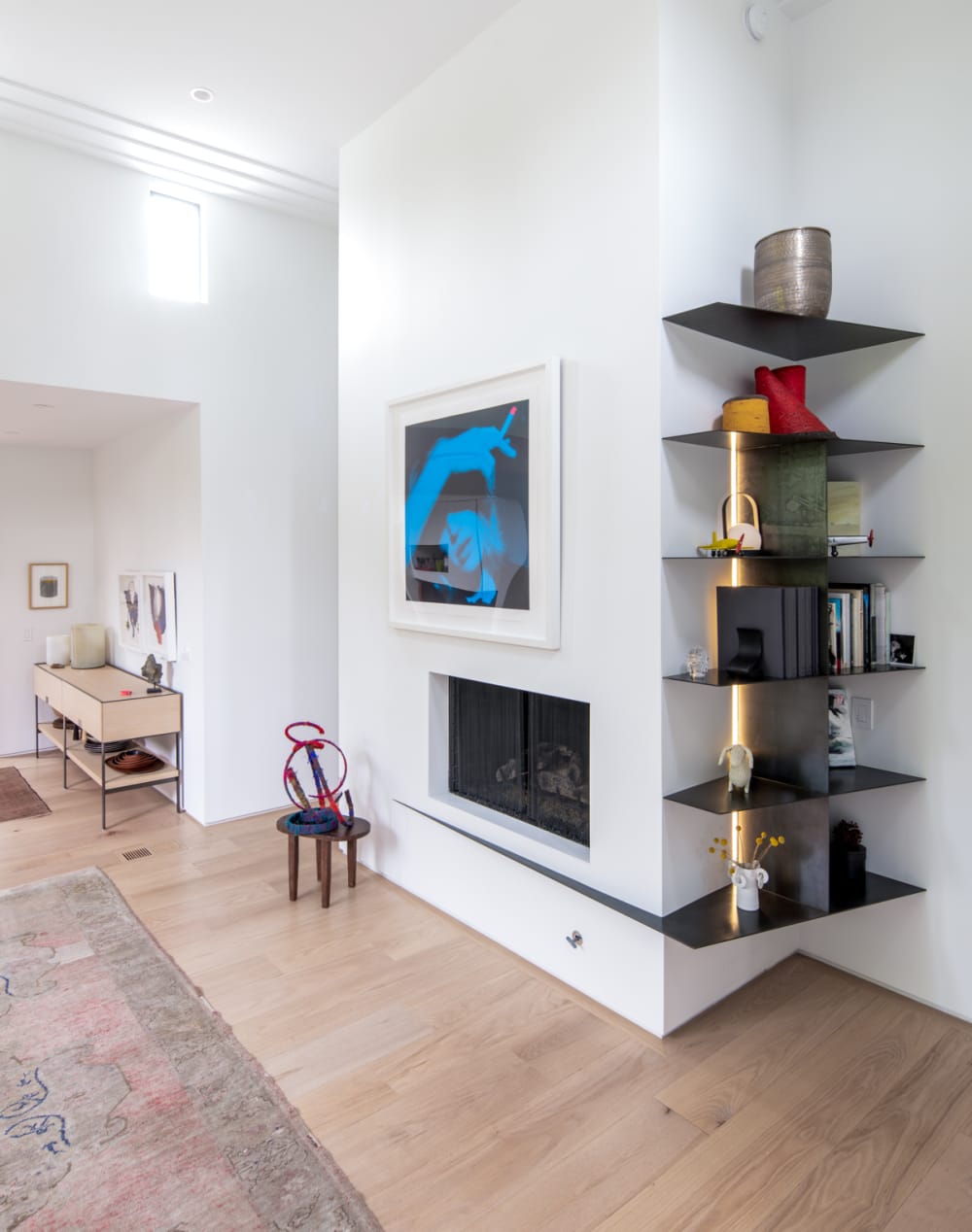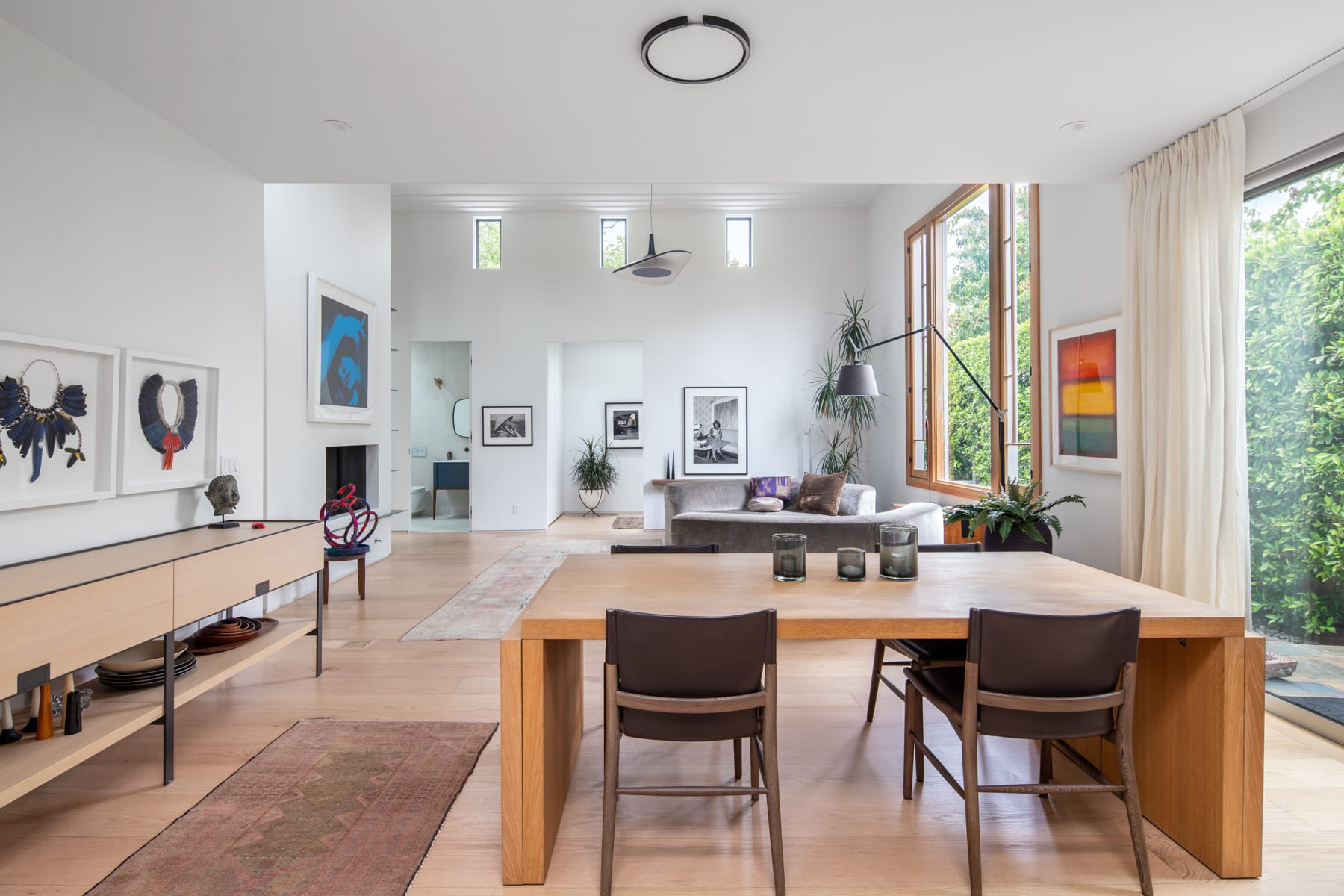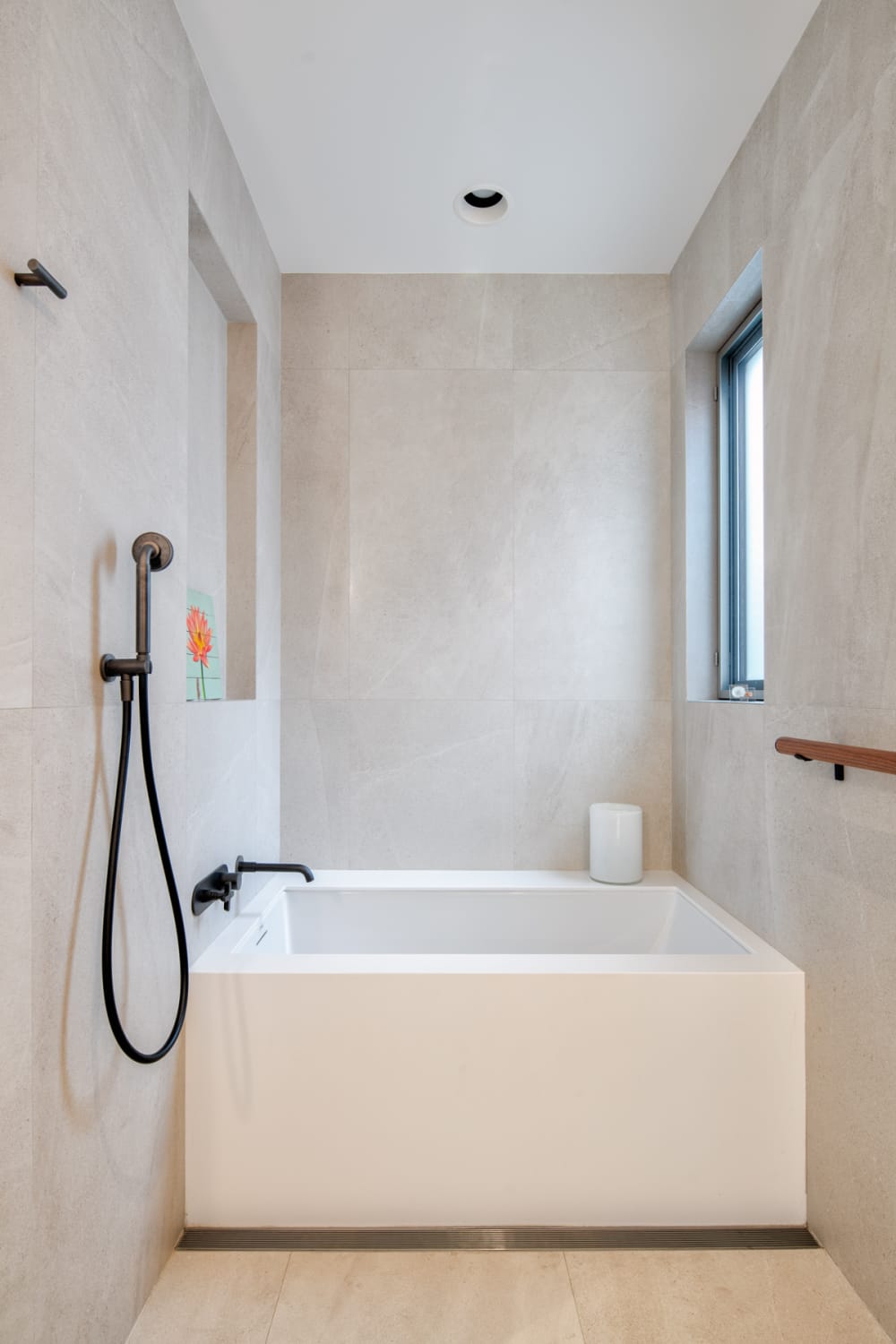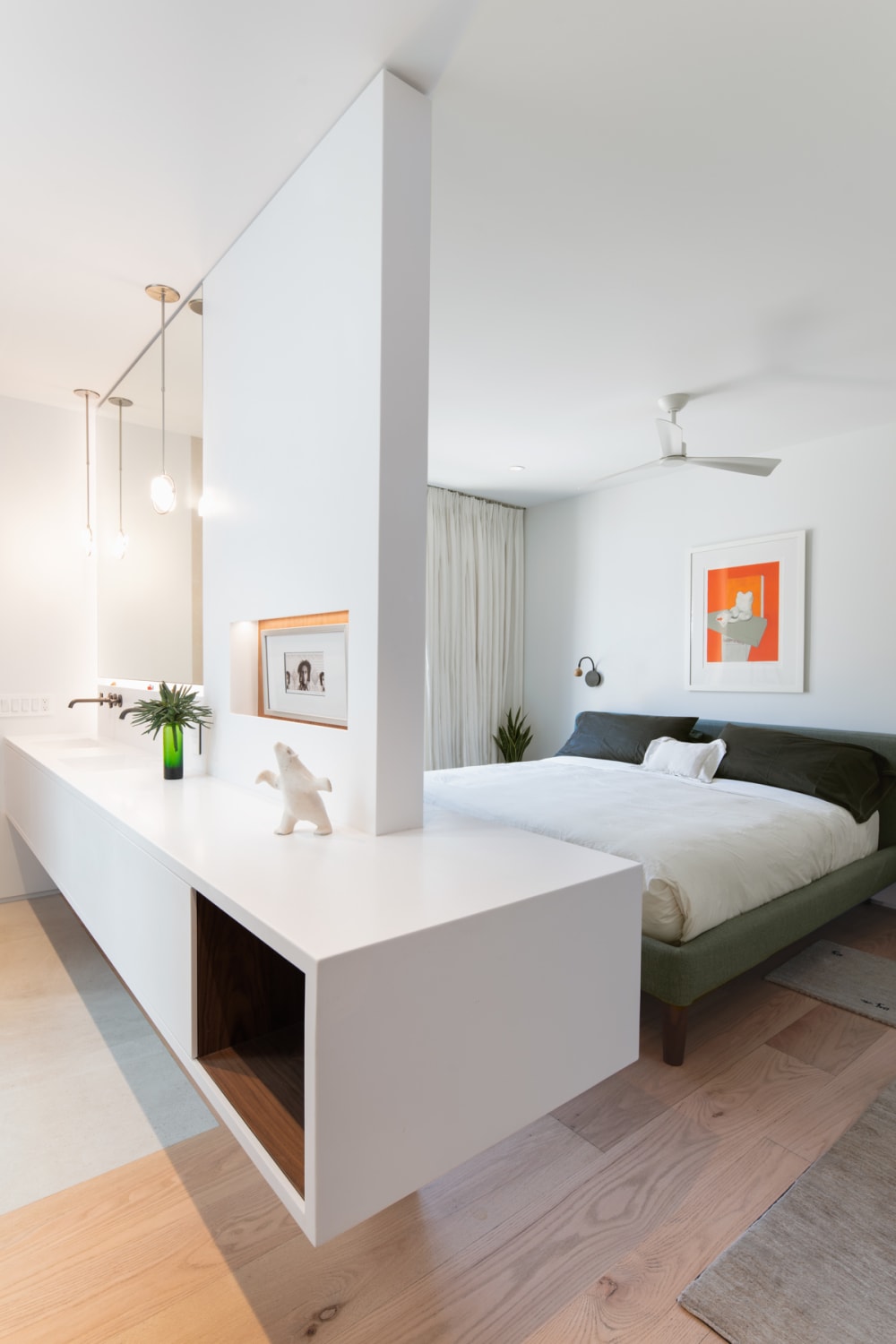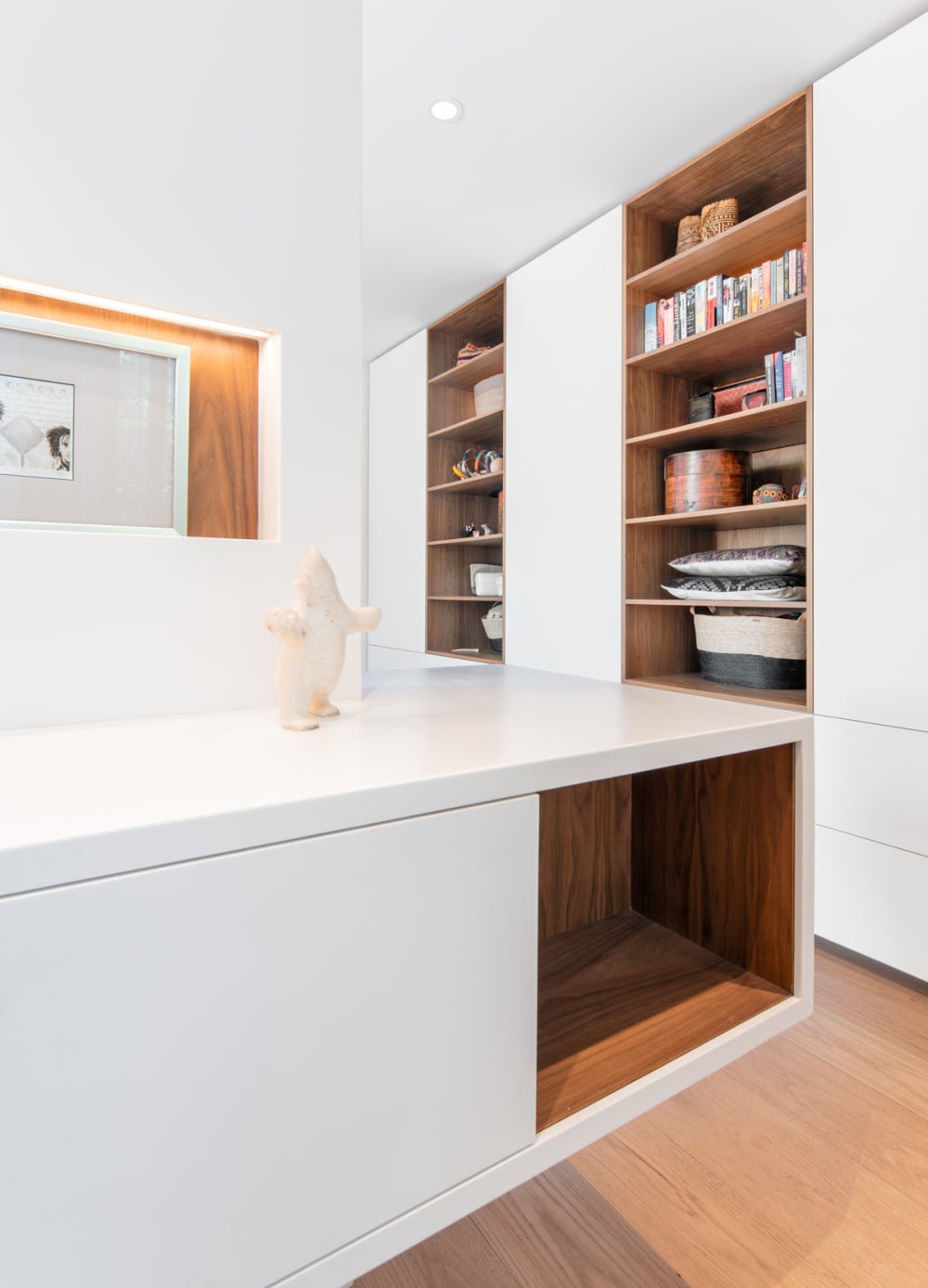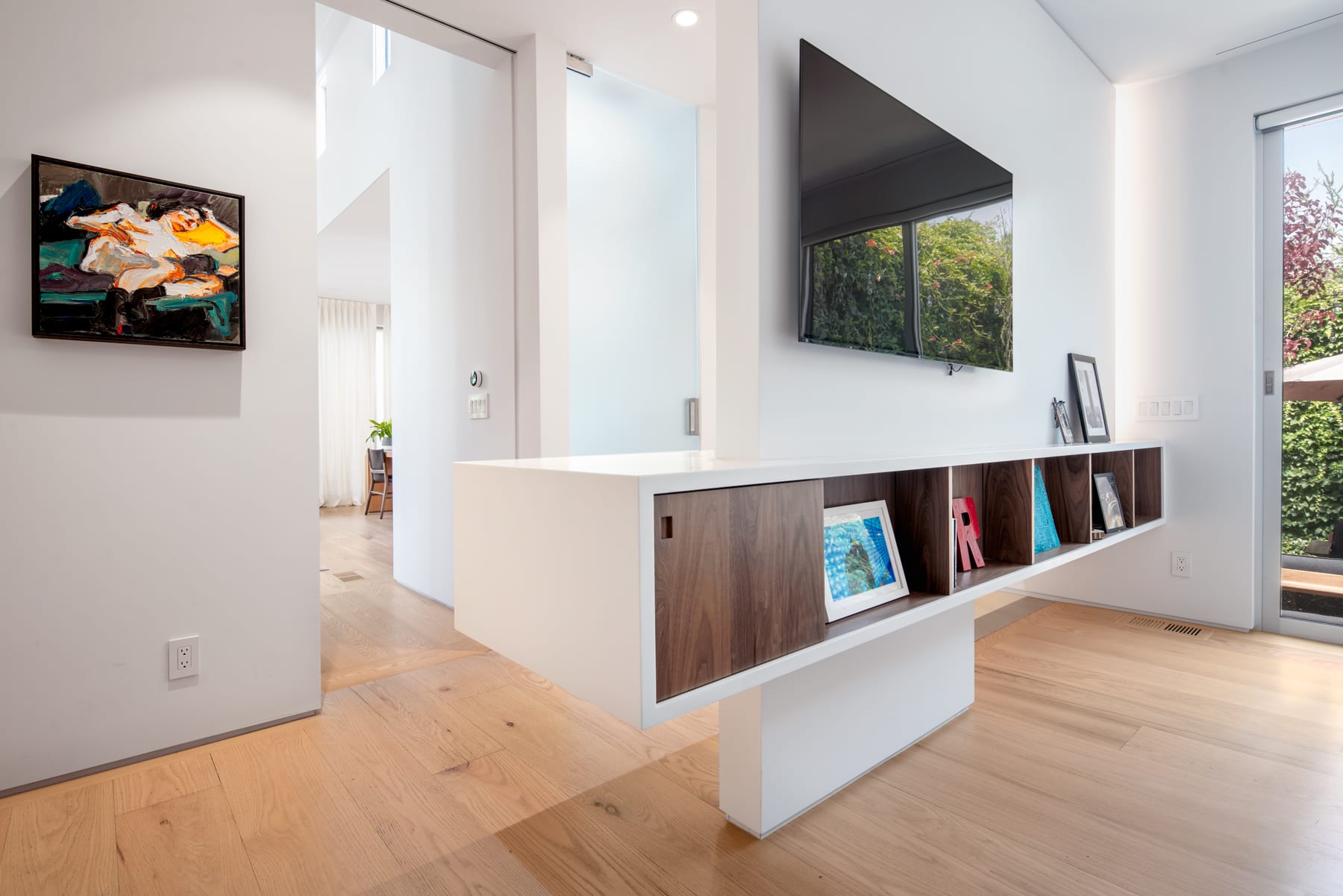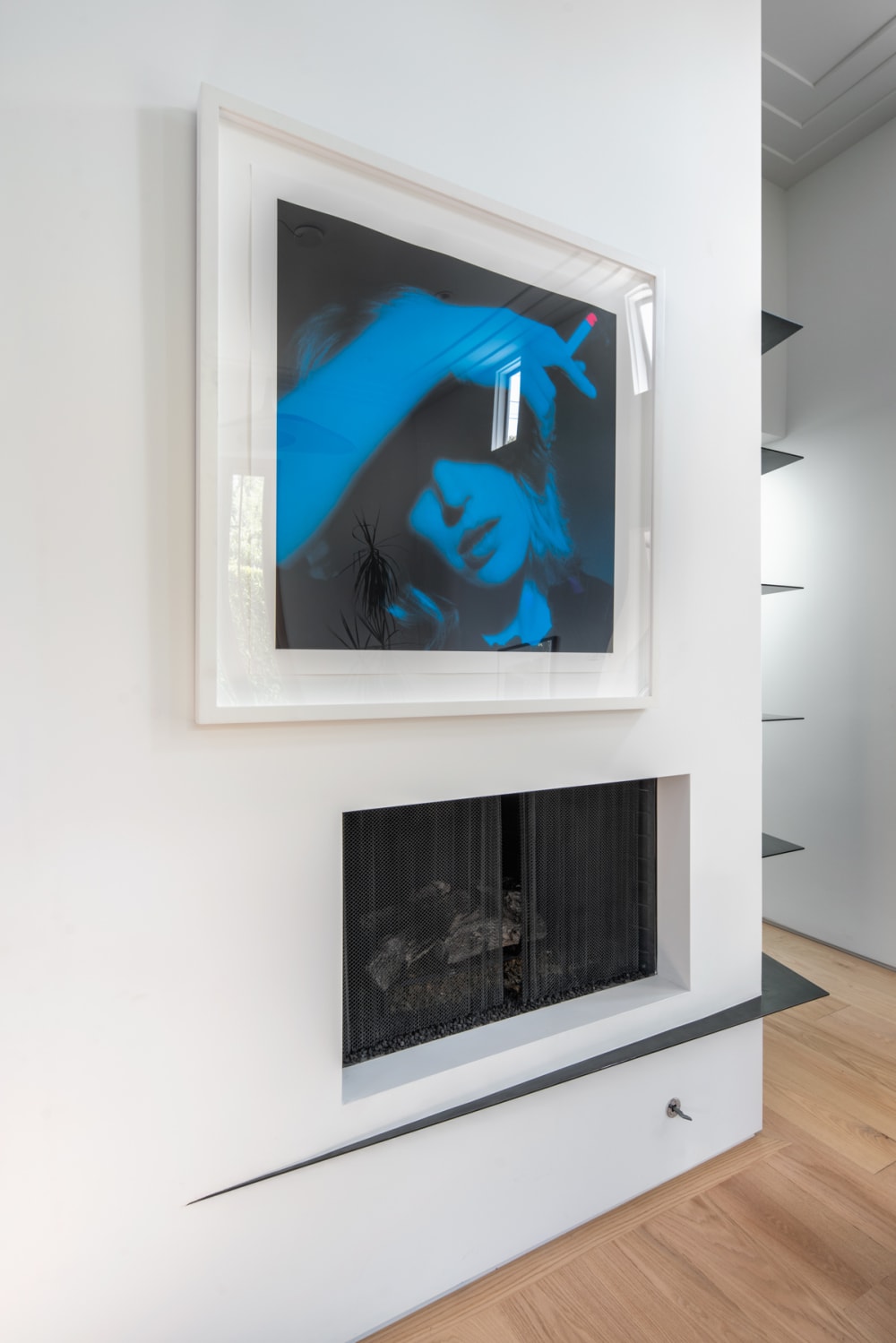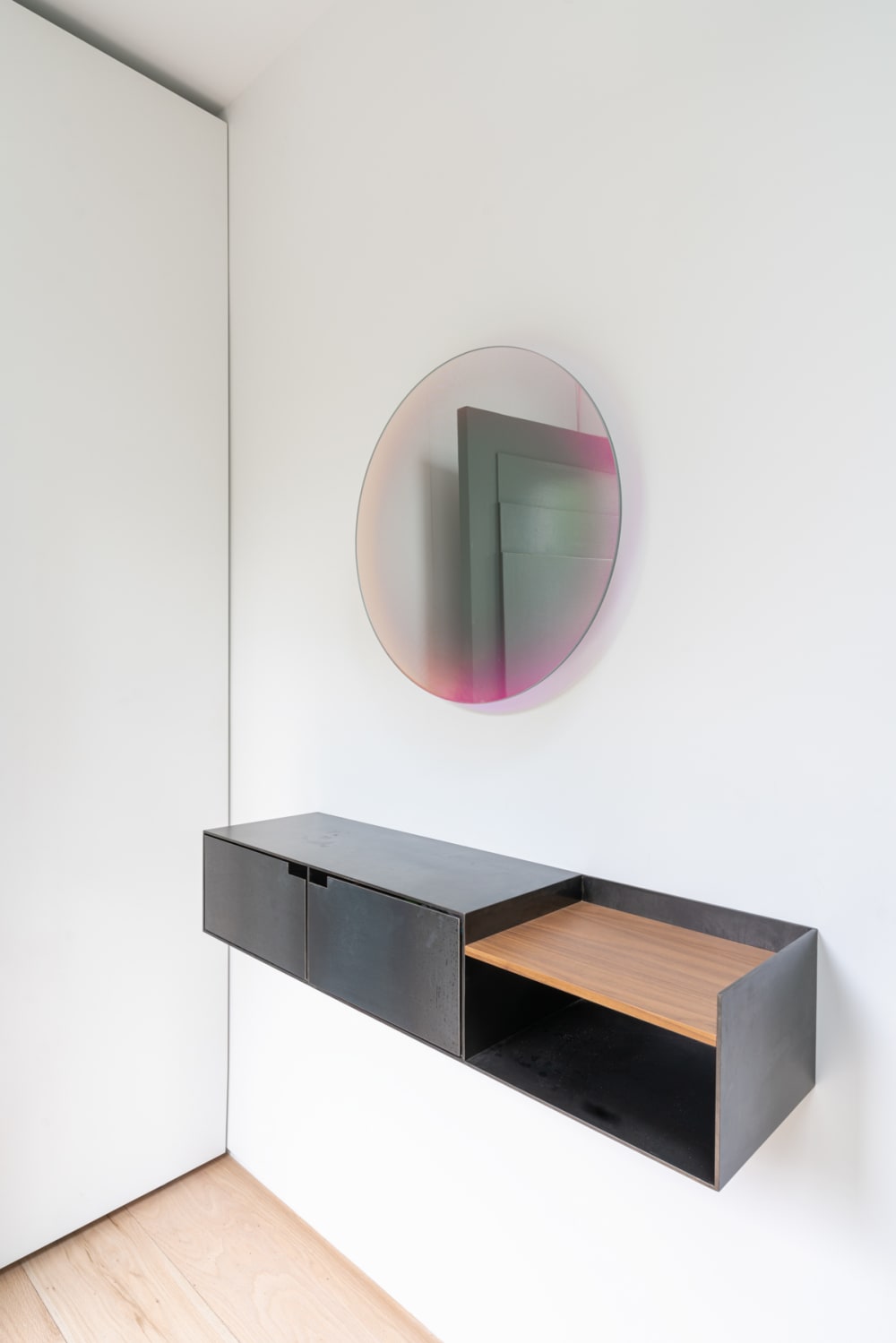Reimi’s Place
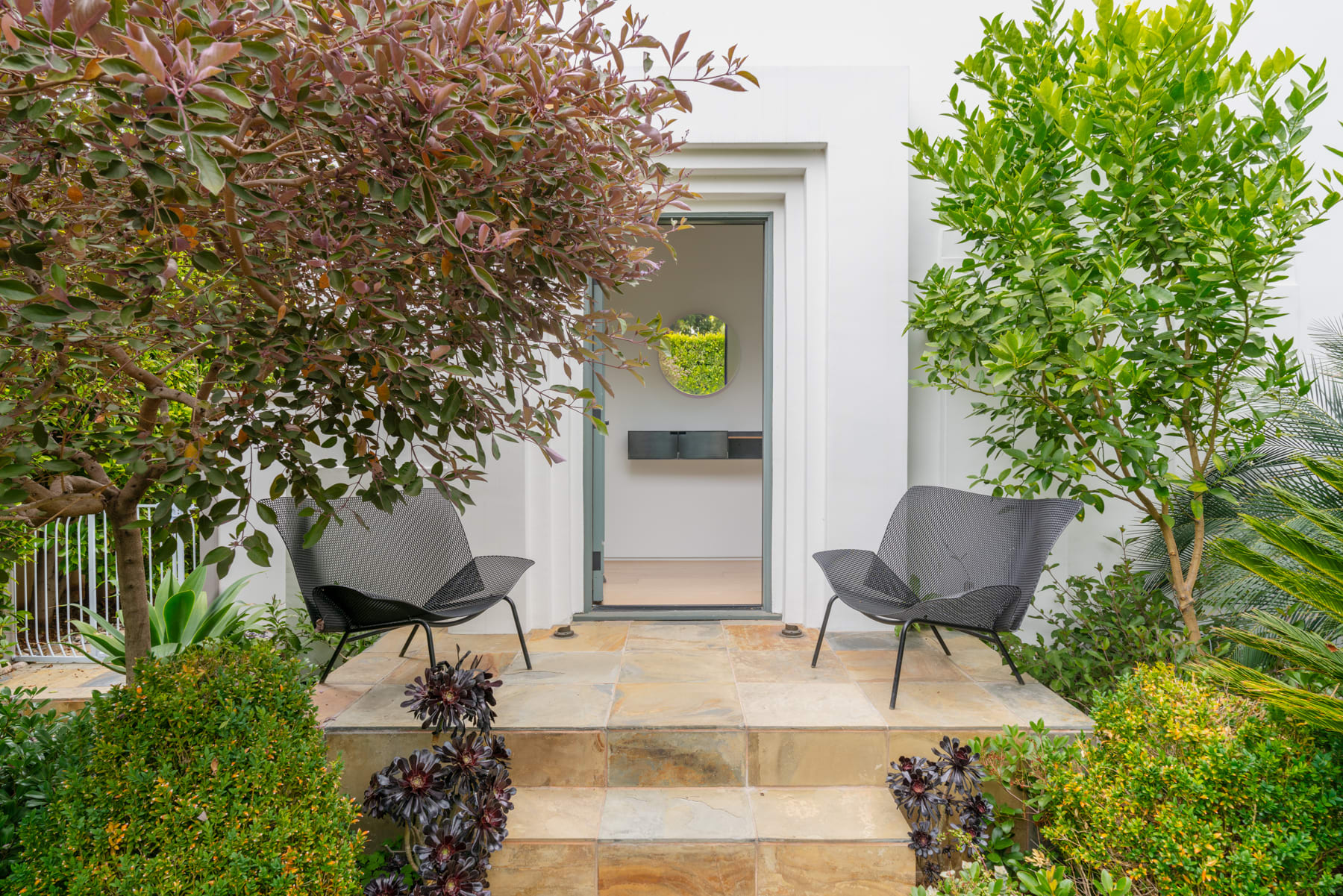
The existing building is located in the center of a half-size urban corner lot, buffered from the street by tall shrubbery that becomes the only visible exterior context from the house. The project provides an alternative paradigm of interior-exterior connection to the customary Southern California model with large exterior openings and long views. Nature and the view are intimate and brought into the interior at limited and specific moments. By opening up the interior organization of the house, the design transfers the role of the exterior wall to the perimeter landscaping and expands the living space. The decompartmentalization of the interior makes the house seem larger than it is, while retaining its personal scale.
The owners, a textile artist and photographer couple, were interested in opening up the interior to achieve a more natural flow between spaces, and to intensify the tactile quality of the space. At the same time, we were asked to treat the house – which has gone through several changes over time – as an objet trouvé, minimizing structural changes, avoiding additions and working around existing features such as the double-height living room with clerestory windows, the gas fireplace and chimney, the existing garden and patio, as well as the existing kitchen. Thus, the design dissolves the boundary between the interior and exterior without adding new openings in the existing exterior skin of the building, instead, it invites the colors, textures and vitality of the garden through effects of mirroring and light reflections.
As our main focus of intervention, the interior is loosened up into a sequence of rooms that flow into one another and are defined without the use of hallways or rigidly demarcated thresholds. All spaces in the house are directly and visually connected to the double height, light-filled living room. At the same time, functional elements such as the fireplace, and a freestanding vanity within the master suite provide spatial layering to achieve visual privacy for bedroom, bath and work areas. The double-sided “vanity”, is at once a space-defining architectural element, and a functional object. Built-in furniture throughout the house, including the fireplace shelving, bedroom closets, study closets and shelving, was designed to accommodate not only items to be stored out of sight, but also to provide ample opportunity for displaying the owners’ collection of artworks, artifacts and memorabilia. A reduced material and color palette, of white acrylic resin and paints, raw steel and walnut, was deliberately implemented to provide a neutral spatial context for the client’s colorful artifacts and multidimensional personas.
As a result, the interior of the house exudes a lived-in warmth while retaining the purity of the space.
While the design redefined the interior organization to address the new owners’ needs, the structural intervention was kept to a single location to achieve the multiple framing of the public areas from entry to kitchen. The art-deco- influenced exterior, the genuine oak flooring, and large original living room window were refurbished to preserve the materials and original character of the building’s fabric.
